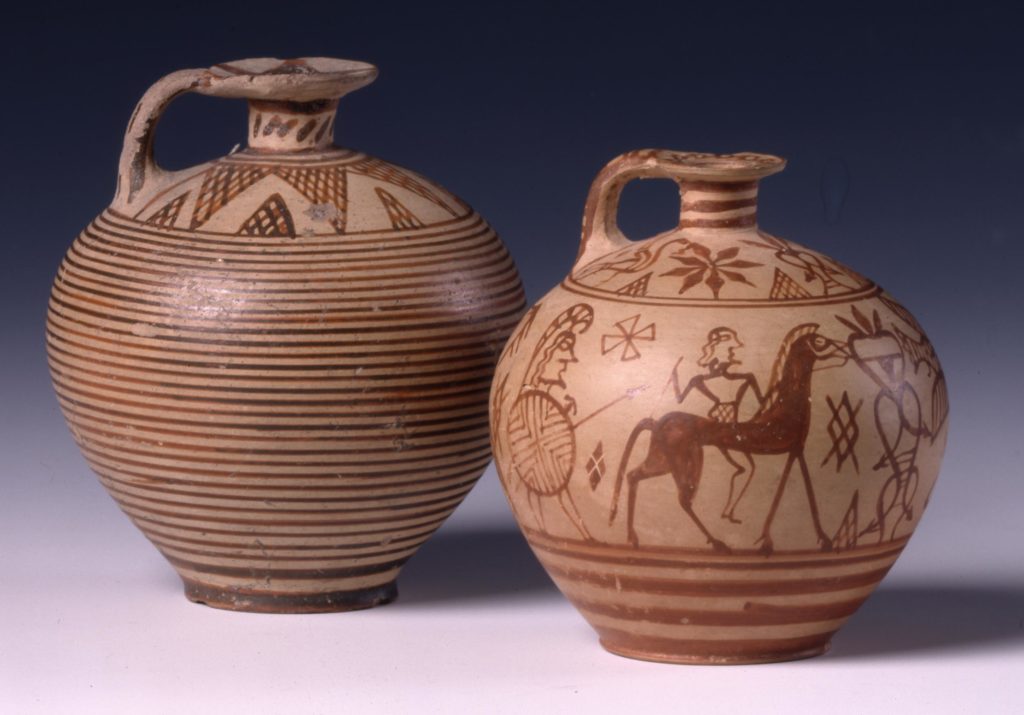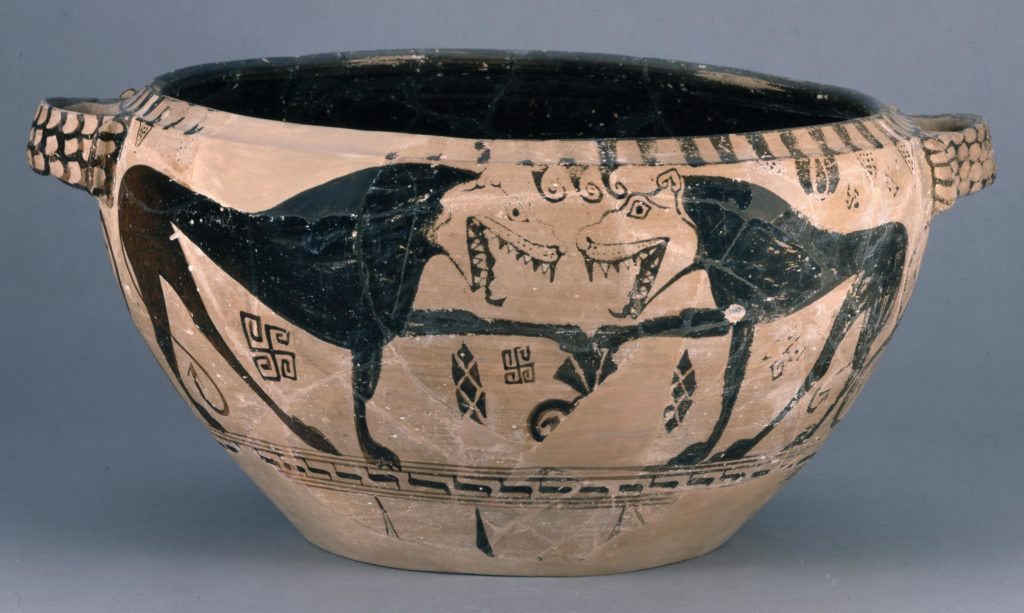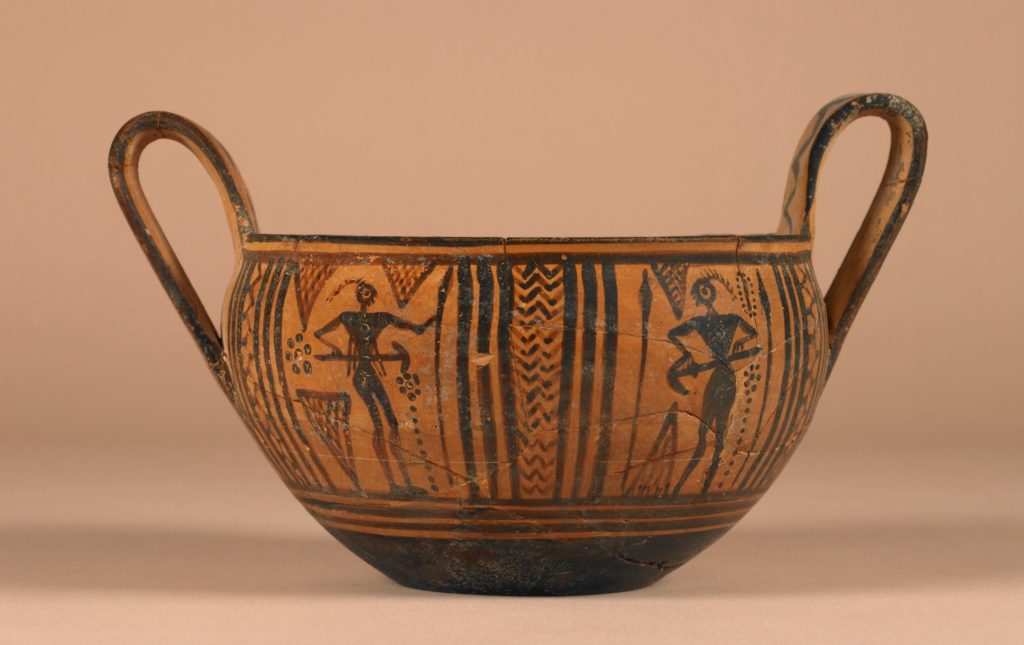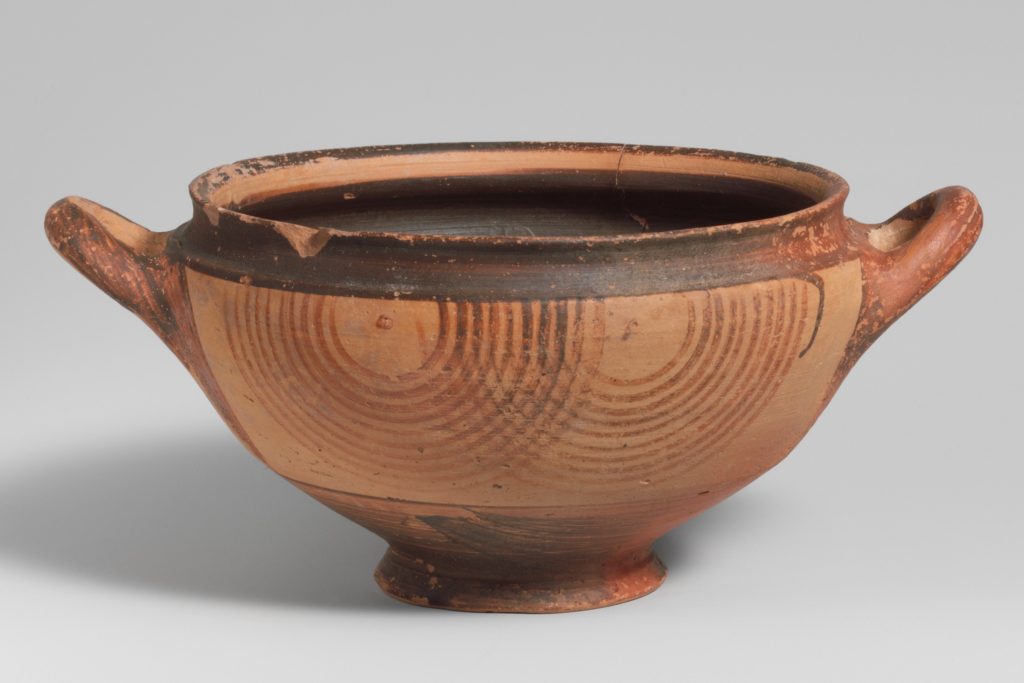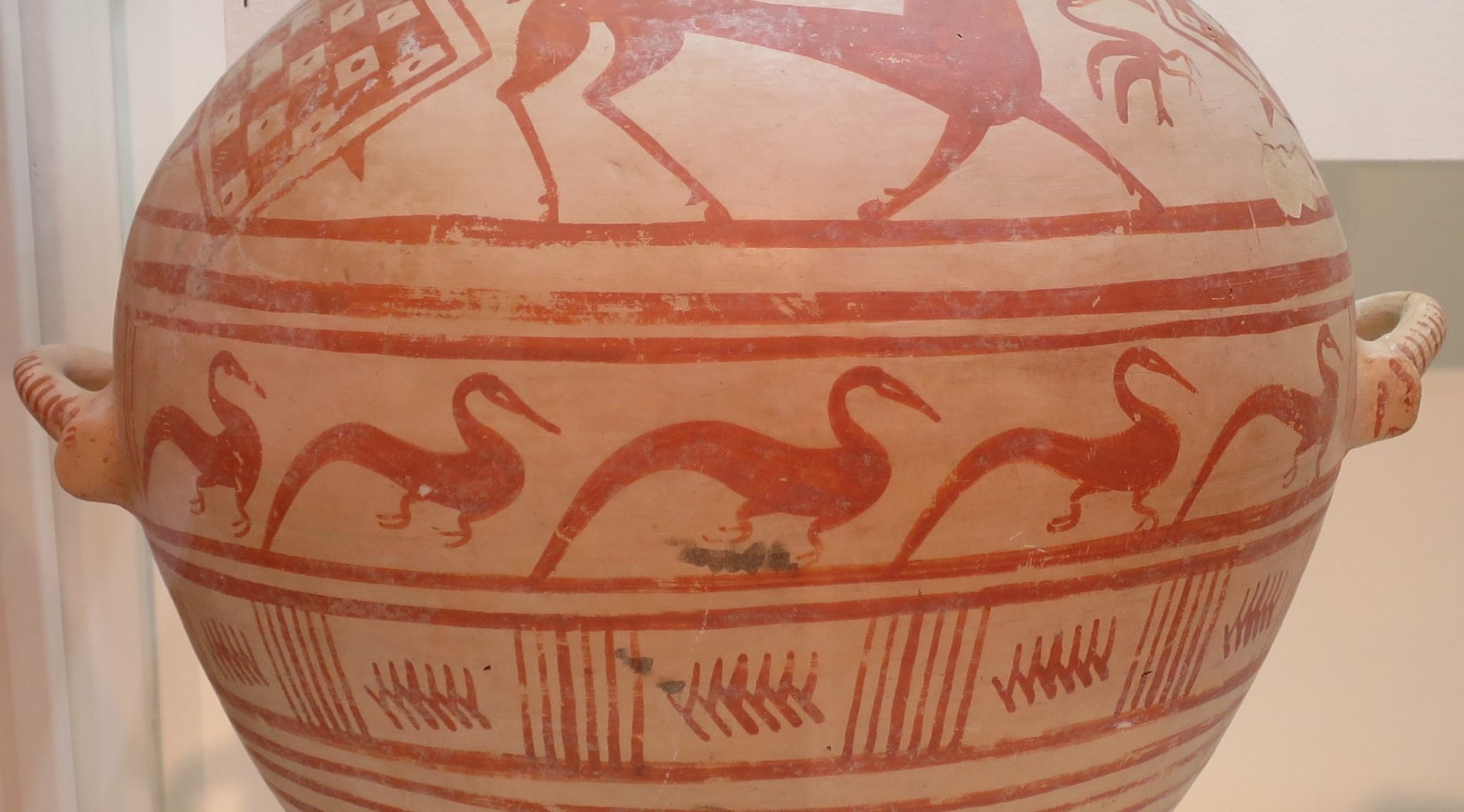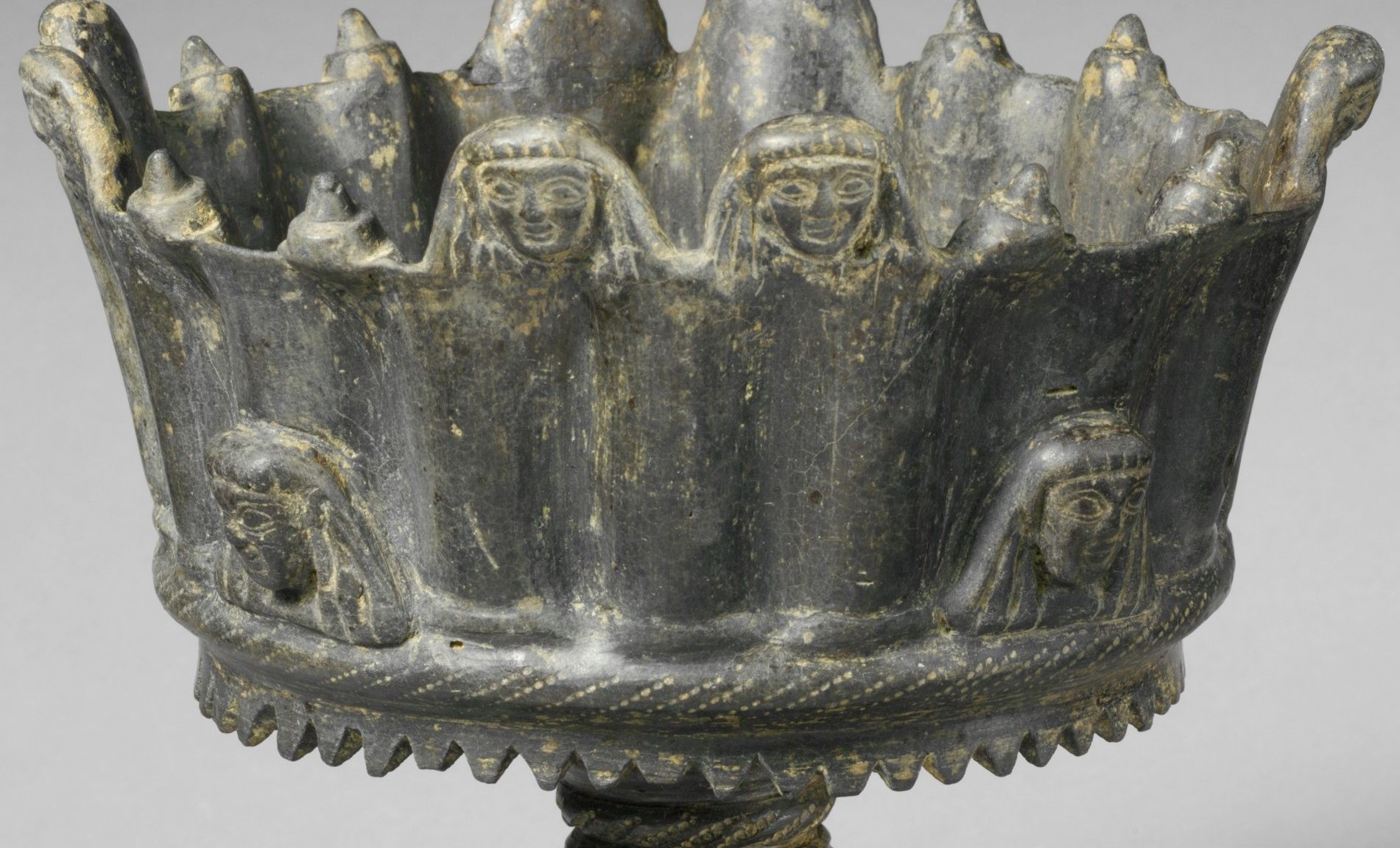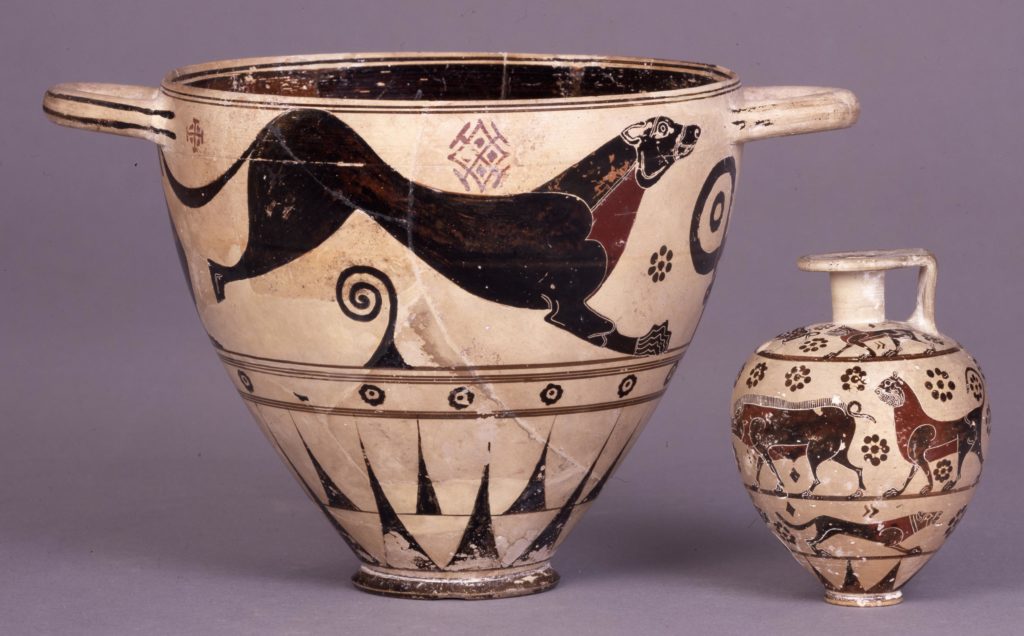
On this vase, we see something new. Even if, in composition it resembles the vase with the two lions from Attica, it is of a much higher quality, but what is more, it employs two different colors – besides the light background, it uses black and a red color. Moreover, the details in the neck and the head are no longer painted, but incised, which allows for much greater detail.
London, British Museum, 1860,0404.18
Miko Flohr, 11/09/2020

